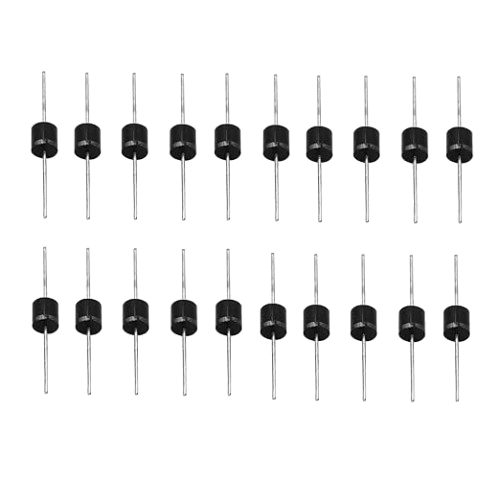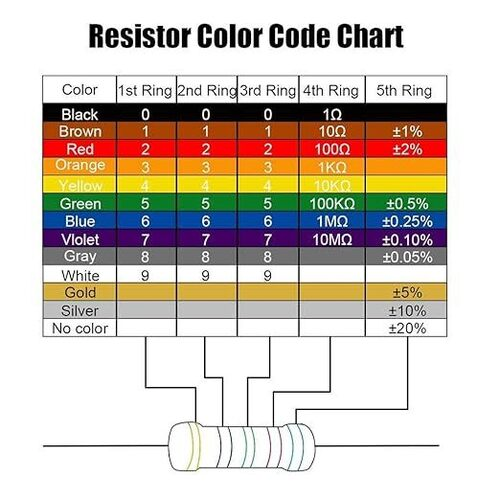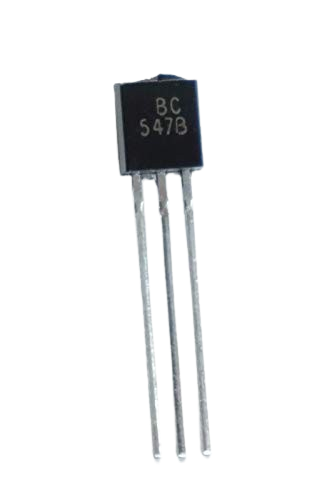Diodes Explained: Types, Working, Applications, and Selection Guide for Electronics Projects

Overview
Understanding Diodes: The Unsung Heroes of Electronics
A diode is a tiny yet powerful electronic component that acts like a one-way valve for electricity, allowing current to flow in only one direction. Picture it as a gatekeeper in your circuits, ensuring electricity moves the right way while blocking it from going backward. These little marvels are found in almost every electronic device you use—from phone chargers and laptops to TVs and even washing machines.Typically made from materials like silicon, diodes are essential for controlling electrical flow and protecting circuits from damage.How Do Diodes Work?
Every diode has two ends:-
Anode: The positive side.
-
Cathode: The negative side.
What Does a Diode Look Like?
In circuit diagrams, a diode is shown as a triangle pointing toward a line (→|). Inside, it’s built from two types of materials that team up to manage the flow of electricity, like a traffic cop directing cars at an intersection.Types of Diodes and Their Superpowers
Diodes come in various flavors, each with a unique role in electronics. Here’s a quick guide to some common types:|
Type |
What It Does |
|---|---|
|
Standard Diode |
Converts alternating current (AC) to direct current (DC). |
|
Zener Diode |
Keeps voltage steady, like a regulator. |
|
Schottky Diode |
Switches super fast and saves energy. |
|
LED |
Lights up (think LED bulbs or screens). |
|
Photodiode |
Turns light into electricity (used in solar panels). |
|
Tunnel Diode |
Operates in lightning-fast circuits. |
|
Varactor Diode |
Acts like a tunable capacitor in radios. |
|
Laser Diode |
Creates laser light for things like DVD players or barcode scanners. |
Where Are Diodes Used?
Diodes are the unsung heroes behind many devices, including:- Smartphone and laptop chargers
- Radios and televisions
- LED lighting
- Power supplies
- Computers
- Electric motors
- Basically, any modern gadget you can think of!
Key Things to Know About Diodes
Before diving into a project with diodes, here are some important details to understand:-
Forward Voltage Drop: Diodes use up a small amount of voltage (usually around 0.7V) as current passes through.
-
Reverse Leakage: A tiny bit of current might slip through even when the diode is blocking.
-
Breakdown Voltage: This is the voltage at which a diode can no longer block reverse current, letting it flow the wrong way.
-
Maximum Current: Every diode has a current limit. Push too much through, and it could overheat and fail.
How to Choose the Right Diode
Picking the perfect diode for your project depends on a few factors:- The amount of current your circuit will carry.
- The voltage the diode needs to handle.
- How quickly the diode needs to switch on and off.
- Whether energy efficiency (low voltage loss) matters.
- The size and shape that fits your circuit board.
Real-World Example: Turning AC into DC
Imagine you have a 12V AC power source but need to run a 12V DC device. You can build a bridge rectifier circuit using diodes to convert the power. Here’s how it works:
What You’ll Need:
- 4 x 1N4007 diodes
- A 12V transformer
- A 1000µF capacitor
How It Works:
- The four diodes team up to transform AC power into DC power.
- The capacitor smooths out the current, ensuring a steady flow.
The Result: You’ve got a reliable 12V DC power source ready to run your device!
Why Diodes Are Awesome
Diodes are a staple in electronics for good reason:- They’re inexpensive and compact.
- They’re easy to use in circuits.
- They protect your devices from damage.
- They come in many types to suit different needs.
- They’re found in nearly every electronic gadget.
Things to Watch Out For
While diodes are fantastic, there are a few pitfalls to avoid:-
Overloading: Too much current can fry a diode.
-
Power Loss: Diodes always lose a bit of power as current flows through.
-
Reverse Voltage Limits: Some diodes can’t handle high reverse voltages, so always check their specifications.
Where to Buy
Prices may vary. Click on "Buy Now" to check current availability and pricing.
Administrator
Frequently Asked Questions
Common questions about Diodes Explained: Types, Working, Applications, and Selection Guide for Electronics Projects. Find answers to the most frequently asked questions.
User Reviews & Comments
Share your experience with this IoT Blog. Your feedback helps our community make informed decisions!
Share Your Experience
Help others by sharing your thoughts about this IoT Blog.
Related Blogs
Explore more IoT Blogs in the same category

Resistors in IoT: Types, Applications, Selection Guide, and Circuit Examples
Supporting Components
Resistors are essential components in IoT circuits, helping control voltage, current, and signal flow. This guide explains the types of resistors, their functions, how to choose the right resistor for your IoT project, and real circuit examples. Learn how resistors improve reliability and performance in connected devices.

PC817 Optocoupler: Working, Pinout, Circuit, Applications, and Selection Guide
Supporting Components
PC817 is a widely used optocoupler that provides electrical isolation between input and output using an internal LED and phototransistor. This guide explains its working principle, pinout configuration, circuit connection, and real-world applications in automation and safety systems. Whether you're designing a power supply or a microcontroller interface, PC817 offers a reliable solution for signal isolation.

Transistors: Working, Types, Applications, and Complete Guide for Beginners and Engineers
Supporting Components
Discover everything about transistors in this complete guide. Learn how transistors work, explore different types like BJT and MOSFET, and understand their real-world applications in electronics. Perfect for students, beginners, and professionals seeking clear, accurate, and practical information about this key electronic component.
No Reviews Yet
Be the first to share your experience with this IoT Blog!